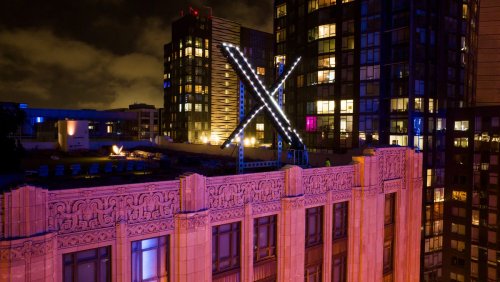Last week, social media giant Twitter underwent a significant rebranding effort initiated by its owner, Elon Musk. The company, now known as X, saw changes to its desktop and app interface, as well as its headquarters, signaling a bold new direction for the platform. Musk, who purchased Twitter in October for a staggering $44 billion, has been making a series of alterations to reshape the platform according to his vision of an “everything app.”
Among the notable changes brought about by the rebranding are temporary limits on the number of posts users can view, replacing “tweets” with “posts,” and introducing charges for verification. While these changes are part of Musk’s broader strategy, not everyone seems to be onboard with the new logo and direction. Many users on the app have expressed their dissatisfaction with the revamped design.
As Twitter transitions into the new era of X, it is too early to predict how the changes will play out and how users will adapt to the modifications. Nevertheless, this rebranding has reminded many of other well-known brands that underwent transformations, some with successful outcomes, while others faced challenges.
Netflix and Qwikster: A Lesson in Backtracking
In 2011, Netflix caused a stir when it announced plans to split its DVD mail program and streaming services into two separate offerings. The streaming service was to be rebranded as Qwikster. Subscribers would now have to pay for both Netflix (which then only offered DVD rentals) and Qwikster to enjoy both services. The move resulted in a significant price hike from $10 to $16 per month for both services.
The abrupt change and the increased costs led to severe backlash from Netflix’s user base. The company lost around 1 million subscribers in just one month, as users sought alternatives like Hulu and Amazon, NPR reported at the time. Eventually, Netflix abandoned the Qwikster idea a few months later.
Dunkin’ Donuts to Dunkin’: A Streamlined Identity
In 2019, Dunkin’ Donuts decided to drop “donuts” from its name and rebrand itself as Dunkin’. The rebranding was part of a larger strategy that included an expanded drink menu, increased marketing efforts targeting younger demographics, and a focus on faster drive-thru service.
The shift to Dunkin’ was aimed at portraying the brand as more than just a donut shop, offering a broader range of beverages and snacks. The rebranding proved successful as Dunkin’ continued to solidify its position in the fast-food industry.
Facebook to Meta: Embracing the Metaverse
In 2021, Facebook, under the leadership of Mark Zuckerberg, announced a transformative rebranding plan. The social media giant would now be known as Meta, reflecting its focus on building a metaverse.
The metaverse is a virtual universe encompassing various technologies like virtual reality, augmented reality, and video, where users can immerse themselves in a digital world. With the metaverse, supporters envision a future where people work, play, and connect with friends in virtual environments, attending concerts, conferences, and even exploring virtual destinations worldwide.
New Coke: A Tale of Marketing Misstep
In 1985, Coca-Cola introduced New Coke, a revamped version of its classic beverage with a different recipe. The soda was intended to be sweeter and smoother, but the new formula proved to be highly unpopular with consumers.
Public backlash against New Coke was swift and strong, with many demanding a return to the original Coke recipe. Only 13% of soda drinkers reported liking the new version, and even Pepsi capitalized on the opportunity, mocking New Coke in its commercials.
Within just 77 days, Coca-Cola abandoned New Coke and reverted to the original formula, marking a significant failure in product rebranding history.
Conclusion: The Impact of Rebranding
Rebranding is a powerful tool that can shape the perception of a company and its offerings. While some rebranding efforts have succeeded in revitalizing brands and attracting new audiences, others have faced backlash and unintended consequences. The X rebranding of Twitter is now poised to test the waters of user acceptance and the future direction of the platform.
As the social media landscape continues to evolve, X’s transformation under Elon Musk’s leadership will undoubtedly be closely watched by industry experts and users alike. Only time will tell if the rebranding proves to be a fruitful endeavor or if it will face the challenges experienced by other famous brands in the past.


